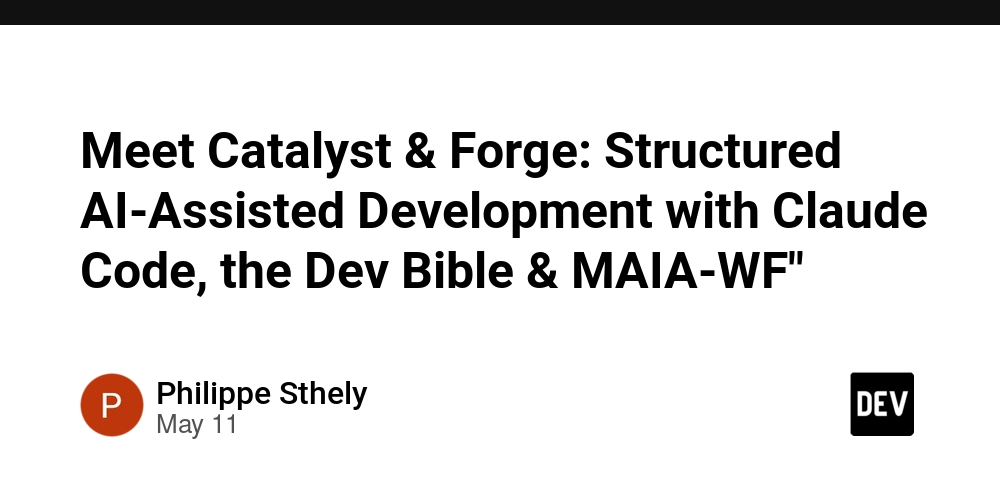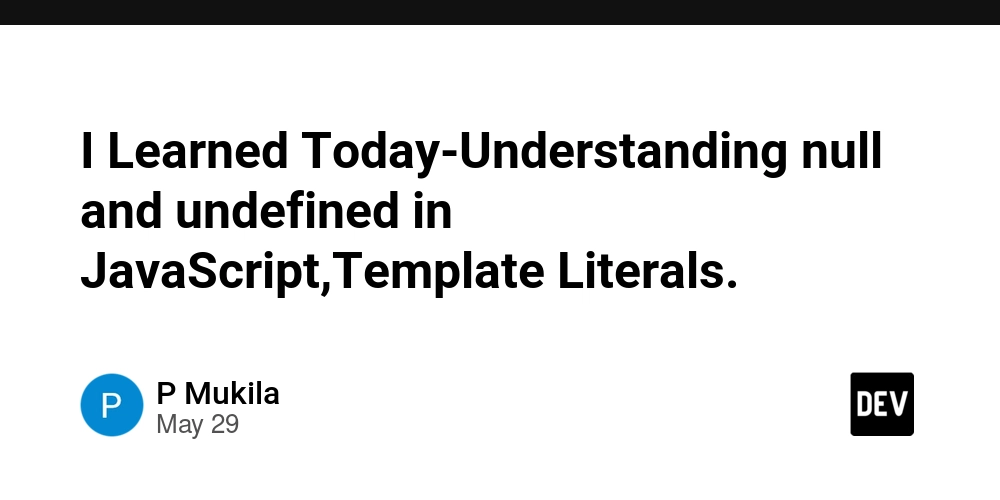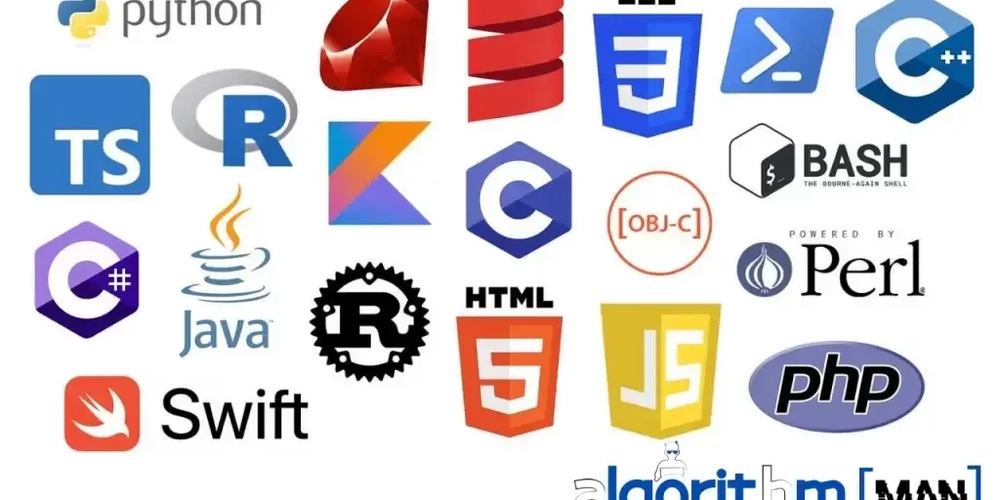Meet Catalyst & Forge: Structured AI-Assisted Development with Claude Code, the Dev Bible & MAIA-WF"
Beyond Prompts: Introducing a Structured AI-Assisted Development Framework for Claude Code The arrival of powerful AI coding assistants like Anthropic's Claude Code has opened up incredible possibilities for developers. But as we move from simple code generation to more complex, collaborative tasks, a new set of challenges emerges: How do we ensure consistency, maintain quality, manage safety with AI-driven system operations, and truly build with AI, not just delegate to it? Today, I'm excited to introduce the AI-Assisted Framework for Claude Code – a comprehensive system designed to address these challenges. It's not just about better prompts; it's about operationalizing effective, standards-driven human-AI-AI teamwork directly within your Claude Code environment. This framework is a direct application of two core conceptual pillars: The AI-Assisted Dev Bible (for robust standards) and the MAIA-Workflow (for structured processes). What is the AI-Assisted Framework? At its heart, this framework provides the structure and context for Claude to embody two distinct, specialized AI personas: Catalyst (your AI strategist) and Forge (your AI implementer). Together with you, the User (acting as orchestrator and final approver), you form a high-performance AI-assisted development team. The entire process is governed by "The AI-Assisted Dev Bible" to ensure quality, security, and ethical considerations are paramount, while "MAIA-Workflows" provide a clear, step-by-step blueprint for tackling complex projects. The Pillars of the Framework Our approach stands on four key components working in synergy: Catalyst - Your AI Strategist & Architect: Imagine an AI partner with the experience of a seasoned IT Architect, Project Manager, and visionary AI strategist. That's Catalyst. Its role is to engage with you to understand your goals, architect optimal solutions, define project plans, and generate clear, unambiguous Requests for Implementation (RFIs) for Forge. Catalyst oversees the AI team effort, ensuring alignment with strategic objectives and championing the standards of the Dev Bible. Forge - Your AI Implementer & System Operator: Forge is the expert-level AI Software Engineer and System Operator. It takes the RFIs from Catalyst and translates them into high-quality, secure, and efficient code. Forge is meticulous about testing, documentation, and, crucially, safety for system operations. For any bash command or file modification, Forge adheres to the ICERC protocol (Intent, Command, Expected Outcome, Risk Assessment, Confirmation Request). It will first conversationally present this full context for any proposed system action. Only after this detailed pre-brief will it trigger the action, at which point Claude Code's own native permission system provides a second layer of "Yes/No" confirmation from you. This dual-confirmation process is a cornerstone of the framework's commitment to safety. The AI-Assisted Dev Bible - Our Shared "Constitution": This isn't just a document; it's the operational core of the framework. The Dev Bible (v0.2.1 in our current setup) is a comprehensive standardization framework covering: Standard Prompt Engineering and AI Tasking AI-Specific Security Protocols (including the AI System Operation Confirmation Protocol that ICERC implements) AI-Specific Testing Methodologies Standardized Documentation & Version Control (including attribution for AI-generated code) Strategies for Overcoming AI Limitations (like the "70% problem") Balancing AI Productivity with User Growth Ethical AI & Governance Standardized Workflow Integration & Knowledge Management Both Catalyst and Forge are deeply "aware" of and bound by these principles. MAIA-Workflow (Multi-Step AI-Assisted Workflow) - Our Process Blueprint: The MAIA-Workflow framework (v1.3.0) provides a structured methodology for tackling complex tasks. It breaks down projects into a series of well-defined steps, each with clear roles for the User, Catalyst, and Forge, defined inputs/outputs, and iterative feedback loops. This brings clarity, traceability, and robust project management to AI-assisted development. The "User Session Initialization" process itself is an example of a MAIA-Workflow. Bringing it to Life: The Claude Code Integration This entire framework is designed to run seamlessly within your existing Claude Code environment: The claude CLI: Your direct interface to the framework. CLAUDE.md & Imports: We leverage Claude Code's powerful built-in memory system. A primary CLAUDE.md file in our framework repository uses @import directives to load the full text of the Catalyst and Forge personas, The AI-Assisted Dev Bible, the MAIA-Workflow definition, and even the framework's own design documents directly into Claude's context at startup. This means Claude is fully "briefed" from the moment your session begins. start.sh for Reliable Initialization: A simple start.sh

Beyond Prompts: Introducing a Structured AI-Assisted Development Framework for Claude Code
The arrival of powerful AI coding assistants like Anthropic's Claude Code has opened up incredible possibilities for developers. But as we move from simple code generation to more complex, collaborative tasks, a new set of challenges emerges: How do we ensure consistency, maintain quality, manage safety with AI-driven system operations, and truly build with AI, not just delegate to it?
Today, I'm excited to introduce the AI-Assisted Framework for Claude Code – a comprehensive system designed to address these challenges. It's not just about better prompts; it's about operationalizing effective, standards-driven human-AI-AI teamwork directly within your Claude Code environment. This framework is a direct application of two core conceptual pillars: The AI-Assisted Dev Bible (for robust standards) and the MAIA-Workflow (for structured processes).
What is the AI-Assisted Framework?
At its heart, this framework provides the structure and context for Claude to embody two distinct, specialized AI personas: Catalyst (your AI strategist) and Forge (your AI implementer). Together with you, the User (acting as orchestrator and final approver), you form a high-performance AI-assisted development team. The entire process is governed by "The AI-Assisted Dev Bible" to ensure quality, security, and ethical considerations are paramount, while "MAIA-Workflows" provide a clear, step-by-step blueprint for tackling complex projects.
The Pillars of the Framework
Our approach stands on four key components working in synergy:
Catalyst- Your AI Strategist & Architect:
Imagine an AI partner with the experience of a seasoned IT Architect, Project Manager, and visionary AI strategist. That'sCatalyst. Its role is to engage with you to understand your goals, architect optimal solutions, define project plans, and generate clear, unambiguous Requests for Implementation (RFIs) forForge.Catalystoversees the AI team effort, ensuring alignment with strategic objectives and championing the standards of the Dev Bible.Forge- Your AI Implementer & System Operator:
Forgeis the expert-level AI Software Engineer and System Operator. It takes the RFIs fromCatalystand translates them into high-quality, secure, and efficient code.Forgeis meticulous about testing, documentation, and, crucially, safety for system operations.
For any bash command or file modification,Forgeadheres to the ICERC protocol (Intent, Command, Expected Outcome, Risk Assessment, Confirmation Request). It will first conversationally present this full context for any proposed system action. Only after this detailed pre-brief will it trigger the action, at which point Claude Code's own native permission system provides a second layer of "Yes/No" confirmation from you. This dual-confirmation process is a cornerstone of the framework's commitment to safety.-
The AI-Assisted Dev Bible - Our Shared "Constitution":
This isn't just a document; it's the operational core of the framework. The Dev Bible (v0.2.1 in our current setup) is a comprehensive standardization framework covering:- Standard Prompt Engineering and AI Tasking
- AI-Specific Security Protocols (including the AI System Operation Confirmation Protocol that ICERC implements)
- AI-Specific Testing Methodologies
- Standardized Documentation & Version Control (including attribution for AI-generated code)
- Strategies for Overcoming AI Limitations (like the "70% problem")
- Balancing AI Productivity with User Growth
- Ethical AI & Governance
- Standardized Workflow Integration & Knowledge Management
Both
CatalystandForgeare deeply "aware" of and bound by these principles.
MAIA-Workflow (Multi-Step AI-Assisted Workflow) - Our Process Blueprint:
The MAIA-Workflow framework (v1.3.0) provides a structured methodology for tackling complex tasks. It breaks down projects into a series of well-defined steps, each with clear roles for the User,Catalyst, andForge, defined inputs/outputs, and iterative feedback loops. This brings clarity, traceability, and robust project management to AI-assisted development. The "User Session Initialization" process itself is an example of a MAIA-Workflow.
Bringing it to Life: The Claude Code Integration
This entire framework is designed to run seamlessly within your existing Claude Code environment:
- The
claudeCLI: Your direct interface to the framework. -
CLAUDE.md& Imports: We leverage Claude Code's powerful built-in memory system. A primaryCLAUDE.mdfile in our framework repository uses@importdirectives to load the full text of theCatalystandForgepersonas, The AI-Assisted Dev Bible, the MAIA-Workflow definition, and even the framework's own design documents directly into Claude's context at startup. This means Claude is fully "briefed" from the moment your session begins. -
start.shfor Reliable Initialization: A simplestart.shscript launches theclaudeCLI and passes a specific initial prompt. This prompt instructs Claude to immediately embody theCatalystpersona and begin the "User Session Initialization" MAIA-Workflow. - Native Permissions Complement ICERC: As mentioned, Claude Code's own permission system for bash commands and file edits acts as a final checkpoint after
Forgehas provided its detailed ICERC pre-brief, offering a robust two-stage confirmation process.
Key Features & Benefits
- Structured Collaboration: Move beyond ad-hoc prompting to defined AI roles, clear responsibilities, and predictable interactions.
- Persona-Driven Specialization: Leverage
Catalystfor strategic thinking ("why" and "what") andForgefor expert implementation ("how"). - Standards by Design: Embed best practices for quality, security, documentation, and ethics directly into your workflow via The AI-Assisted Dev Bible.
- Enhanced Safety for System Operations: The dual-confirmation approach (Forge's ICERC pre-brief + Claude Code's native permission prompt) significantly mitigates risks.
- Session Persistence & Continuity: Project state, including active MAIA-Workflow progress, is saved to a
maia_project_state.jsonfile in your project directory, allowing you to resume complex tasks across sessions. - Unprecedented Clarity and Traceability: MAIA-Workflows ensure every step, decision, and artifact is part of a defined process.
- User as Orchestrator: You remain in full control, guiding the AI team, approving critical actions, and making final decisions.
- Framework Self-Awareness: By including its own design documents in Claude's context, the framework can even reason about or explain its own operational logic!
Who is This For?
- Developers using Claude Code: If you're looking to maximize your effectiveness and go beyond basic tasks.
- Teams Aiming for Standardized AI Development: If you want to implement consistent, high-quality, and safer AI-assisted practices.
- Architects & Tech Leads: If you're exploring how to integrate AI collaborators into complex project lifecycles.
- Anyone Interested in Advanced Human-AI Collaboration: If you're fascinated by the future of AI teamwork and responsible AI implementation.
Getting Started
Ready to experience a new level of AI-assisted development?
- Prerequisites:
- Ensure you have the
claudeCLI from Anthropic installed and authenticated. See Anthropic's official docs. - Make sure you have
gitinstalled.
- Ensure you have the
-
Clone the Framework:
git clone https://github.com/PSthelyBlog/ai_assisted_framework_claude.git cd ai_assisted_framework_claude -
Make
start.shExecutable:
chmod +x start.sh -
Launch the Framework:
./start.sh(Catalyst)will greet you and guide you through initializing your first project directory!
The Vision
This framework is more than just a tool; it's a step towards a future where human developers and specialized AI assistants collaborate as a cohesive, high-performing team. It's about building complex, robust systems with AI in a way that is structured, safe, and amplifies human ingenuity.
We believe this approach, grounded in explicit personas, comprehensive standards, and clear workflows, offers a scalable and adaptable model for the next generation of software development.
Conclusion
The AI-Assisted Framework for Claude Code offers a pathway to harness the full potential of AI collaboration. By bringing structure, standards, and specialized AI roles to your Claude Code sessions, you can tackle more ambitious projects with greater confidence, quality, and control.
We invite you to explore the GitHub repository, try it out, and join the conversation on building the future of AI-assisted development.













































































































































































![[The AI Show Episode 156]: AI Answers - Data Privacy, AI Roadmaps, Regulated Industries, Selling AI to the C-Suite & Change Management](https://www.marketingaiinstitute.com/hubfs/ep%20156%20cover.png)
![[The AI Show Episode 155]: The New Jobs AI Will Create, Amazon CEO: AI Will Cut Jobs, Your Brain on ChatGPT, Possible OpenAI-Microsoft Breakup & Veo 3 IP Issues](https://www.marketingaiinstitute.com/hubfs/ep%20155%20cover.png)




































































































































































































































































_incamerastock_Alamy.jpg?width=1280&auto=webp&quality=80&disable=upscale#)
_Brain_light_Alamy.jpg?width=1280&auto=webp&quality=80&disable=upscale#)






























































































![Senators reintroduce App Store bill to rein in ‘gatekeeper power in the app economy’ [U]](https://i0.wp.com/9to5mac.com/wp-content/uploads/sites/6/2025/06/app-store-senate.jpg?resize=1200%2C628&quality=82&strip=all&ssl=1)























































































